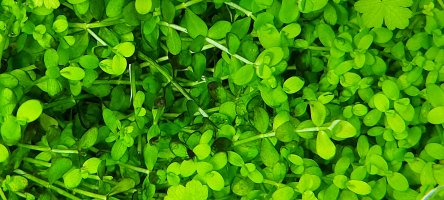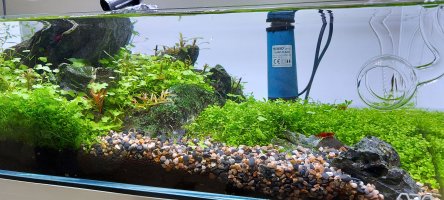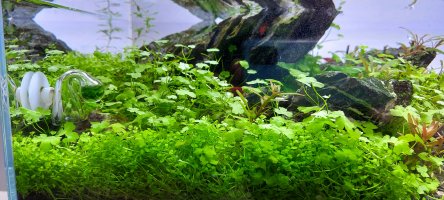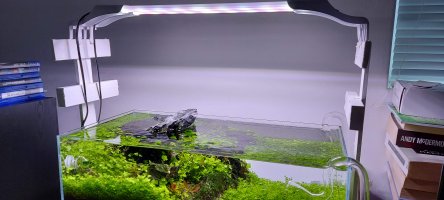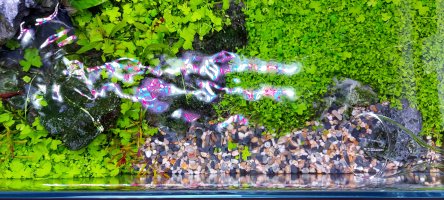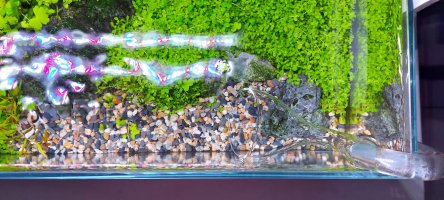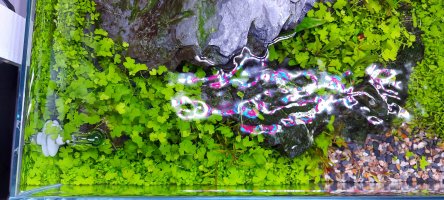kschyff
Member
Hello All,
I have a shallow 60f tank and although I finally got the MC to cover the tank, I am constantly battling stag horn and this black-type of growth as shown in the picture. It usually rears its head when I trim the MC. The tank is clean and I vacuum the carpet every week and clean the canister every second week. Currently using Clive's EI regime exactly as stated. CO2 is delivered via an inline difficult and the whole tank is engulfed in tiny bubbles. DC is light green. Any ideas?
I have a shallow 60f tank and although I finally got the MC to cover the tank, I am constantly battling stag horn and this black-type of growth as shown in the picture. It usually rears its head when I trim the MC. The tank is clean and I vacuum the carpet every week and clean the canister every second week. Currently using Clive's EI regime exactly as stated. CO2 is delivered via an inline difficult and the whole tank is engulfed in tiny bubbles. DC is light green. Any ideas?


